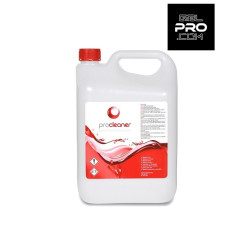Blog entry by Stephanie Spinelli
The market for GBL products is relatively dynamic, with demand driven by its utility in various sectors. The chemical industry appreciates GBL for its solvent properties and low toxicity when compared to alternatives. The ease of manufacturing GBL and its comparatively lower cost increases its attractiveness to businesses aiming to optimize their production processes. However, enforcement challenges remain, particularly with the surge of unregulated e-commerce avenues which bypass traditional regulatory mechanisms.
Regulations typically focus on controlling the sale, distribution, and possession of GBL to minimize the risk of diversion for illegal use. In many jurisdictions, GBL is subject to monitoring and restrictions due to its potential conversion into GHB. The regulatory landscape for GBL is varied across regions, reflecting different levels of control and enforcement. Companies and individuals interested in acquiring GBL must conduct due diligence to navigate these domains effectively.
As the landscape evolves, staying informed about regulatory changes and market developments will be vital for stakeholders involved in the GBL supply chain. The purchase of GBL as a pure solvent intersects various crucial aspects such as market demand, regulatory compliance, and safety management. While Order GBL In Australia's industrial utility continues to drive its market, balancing this with responsible usage underlines the importance of adhering to safety and regulatory frameworks.
Innovations in industries like electronics, pharmaceuticals, and manufacturing are likely to sustain this demand. However, the stringent regulatory landscape implies that market growth is contingent upon compliance with federal and state laws. The demand for GBL continues to evolve, driven by its diverse industrial applications. The purchase of GBL products offers significant benefits across various industries due to its versatile application as an effective solvent.
However, due to its legal complexities and potential hazards, careful consideration and stringent compliance with regulatory frameworks are necessary. As the market continues to evolve, remaining vigilant and informed about changes in regulations and industry demands will enable stakeholders to navigate this field effectively. Businesses should prioritize supplier reliability, safety protocols, and legal compliance when acquiring GBL to ensure seamless integration into their operations while safeguarding public safety and environmental health.
Gamma-Butyrolactone (GBL) is a versatile chemical compound with significant industrial applications, primarily used as a solvent in various processes. Understanding the landscape of purchasing GBL as a pure solvent requires a look into its uses, market dynamics, regulatory environment, and safety considerations. Companies dealing with this substance must ensure that their operations adhere to safety standards to prevent misuse, thereby safeguarding their business interests and public health.
 Regulatory bodies often mandate licenses
for the production, sale, and transport of GBL. Beyond
pharmaceuticals, GBL is also employed as an industrial solvent, a
cleaning agent, and in the production of polymers. It serves as a
precursor in the production of gamma-hydroxybutyric acid (GHB),
which has applications in medicine as an anesthetic and a
treatment for narcolepsy due to its sedative properties. GBL is a
colorless, hygroscopic liquid with a distinct odor, and it is
classified as a lactone.
Regulatory bodies often mandate licenses
for the production, sale, and transport of GBL. Beyond
pharmaceuticals, GBL is also employed as an industrial solvent, a
cleaning agent, and in the production of polymers. It serves as a
precursor in the production of gamma-hydroxybutyric acid (GHB),
which has applications in medicine as an anesthetic and a
treatment for narcolepsy due to its sedative properties. GBL is a
colorless, hygroscopic liquid with a distinct odor, and it is
classified as a lactone.
The global market for GBL is influenced by several key factors, including supply chain considerations, technological advancements, and demand fluctuations in end-use industries. The following are notable trends in the GBL market: This has prompted more suppliers to enter the market, offering competitive pricing and customized formulations to their clientele.
